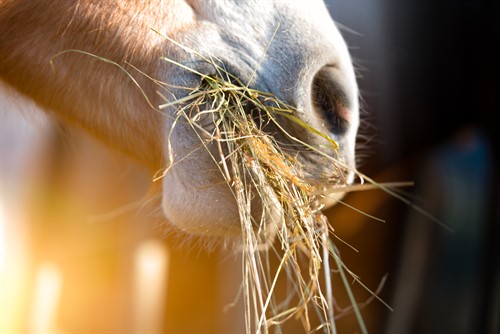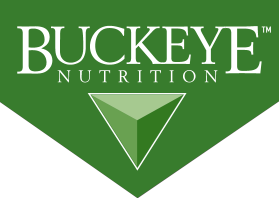Got nutrients? Why you should add a ration balancer to your horse’s diet

Adding a ration balancer to your horse’s diet helps them get essential nutrients that may be missing from their forage. It’s also great for easy keepers that require limited calories. Ration balancers help ensure a well-rounded diet, important for growth, performance, reproduction and more.
You might assume your horse is getting all the nutrients they need on a forage-only diet. But are they really? Forages vary in nutrient quality, and stored hay loses vitamin E within a few weeks. A ration balancer can help fill in the nutritional gaps.
WHAT IS A RATION BALANCER?
Ration balancers are a nutrient-dense horse feed that often come in a pelleted form and have a low feeding rate. They provide protein, essential amino acids, minerals and vitamins that the horse might not be getting enough of in their usual diet. Think of a ration balancer as a multivitamin.
If you’re concerned that this highly nutritious feed will add a lot of calories to your horse’s diet – and therefore cause weight gain – don’t fret. Ration balancers aren’t high in starch, sugar or fat, so they won’t add significant calories.
Some people also question the “high” amount of protein in ration balancers. Coming in at about 25-35% crude protein, that’s a lot more than the 10-16% in standard feed. However, the nutrient-dense ration balancers have a lower feeding rate. Since you’re feeding less to your horse, it adds up to about the same (or sometimes even a little less) amount of protein they would get from feeding the recommended amount of a standard 12% crude protein feed.
GRO ‘N WIN™, the original ration balancer, has 32% crude protein. It can complement a diet consisting of grass or grass-legume mixed forage for horses of all life stages. To complement a diet that is 75% or more alfalfa, BUCKEYE™ Nutrition offers GRO ‘N WIN™ Alfa. Senior Balancer has the same high-quality nutrition as GRO ‘N WIN™, with added MSM (to support joint health) and yeast culture (to support healthy digestion).
WHAT’S MISSING FROM YOUR HORSE’S FORAGE-ONLY DIET?
As we said before, forages can vary in nutrient quality and quantity. In a perfect scenario, pasture would provide all the daily nutrients a horse requires. But factors such as Poor growing conditions like drought or flooding, and seasonal changes can affect what the horse is consuming.
When you start supplementing pasture with hay, you may not be supplying adequate nutrients. As soon as hay is harvested, it begins to lose vitamins and continues to do so the older it gets. Adding a ration balancer to a horse’s forage-only diet can help provide the vitamins, minerals and amino acids they need.
HOW TO ADD A RATION BALANCER TO YOUR HORSE’S DIET
There are a few ways you can incorporate ration balancers into your horse’s diet any time of the year. Since the balancer needs to be fed with forage, hay or pasture, you can combine it with a feed that has good quality forage or supplement a commercial concentrate feed plus forage. It’s best to divide the recommended daily amount of a ration balancer in at least two daily feedings. This practice will help your horse maximize nutrient absorption throughout the day.
A ration balancer can be good for horses who need limited starches and sugars in their diet, like horses who suffer from polysaccharide storage myopathy (PSSM) or other forms not related to sugar/starch; horses who suffer from PPID or Equine Cushing’s Syndrome; and insulin-dysregulating horses. A ration balancer can also help limit potassium for horses with hyperkalemic periodic paralysis (HYPP) when fed with a forage low in potassium concentration.
When looking for the best ration balancer for horses, make sure you get one that is made with pure, safe ingredients. At BUCKEYE Nutrition™, we use 100% traceable ingredients and produce our feeds in a single, medication-free facility.


